Third Wave of VR Looks Like A Tsunami
And If You’re Not Careful, You Could Get Swept Away – Part One
by Bob Cooney
Those who attended the fall IAAPA Expo in Orlando certainly felt the buzz around Virtual Reality. But unless you went to the Consumer Electronics Show in Las Vegas in January, you probably didn’t get a real sense of where the technology is heading. This last year marked my 25th anniversary going to IAAPA, and my 20th anniversary of CES. Both shows are useful to get a feel for the direction the respective industries are heading. Since they are inherently intertwined, it’s given me a good sense of what our future might hold.
This year, half of the hype at CES was around VR. There were more than 250 exhibitors showcasing VR technologies, as well as its close cousin A/R (augmented reality). That’s a testament to the level of investment pumping into the industry. At last count over 400 companies have received over $8 billion in venture funding. That’s a lot of bitcoins.
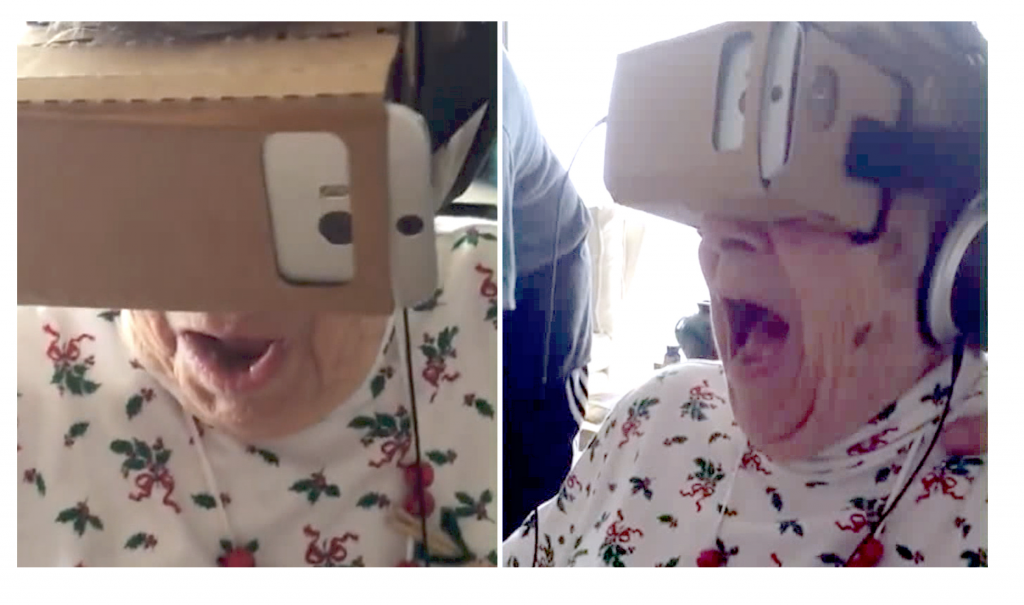
Granny freaks over her “VR” experience, but putting a cellphone in a cardboard holder is not what it’s all about, and certainly way less than what our industry can do with the technology.
Content May Be King, But Context Is Everything
But the hype doesn’t guarantee success. Lots of products get hyped beyond belief.
A good way to see how a topic is trending is to use the Google Trends Tool. It tracks online interest of a keyword or topic going back to 2004. As you can see in the graph below, interest in VR has skyrocketed in the last year, peaking on Christmas day when people the world over unwrapped their gifts and uploaded videos of their grandmas freaking out while using their Oculus Rift, HTC Vive, Playstation VR and Samsung Gear VR headsets.
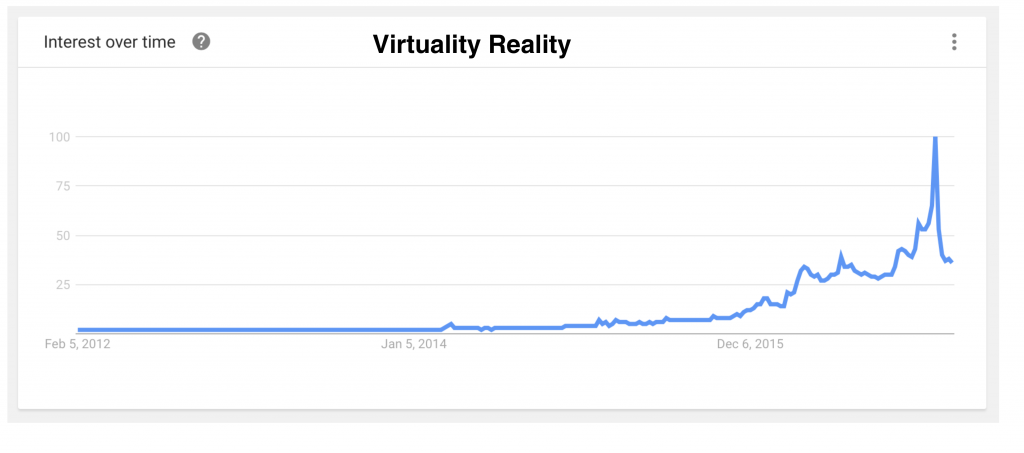 But the problem with that chart is it only shows interest in VR relative to its own popularity. Where 100 is the most interest VR has garnered, every other plot on the graph is a percentage of VR at its most popular point. A better view of how VR is permeating the consciousness of the culture is to compare it to other technologies that have actually changed the gaming landscape. Below is a chart showing interest in VR compared to XBOX One and Playstation 4 game consoles. As an entertainment technology, it looks like VR is approaching XBOX One in interest. (See the chart below.)
But the problem with that chart is it only shows interest in VR relative to its own popularity. Where 100 is the most interest VR has garnered, every other plot on the graph is a percentage of VR at its most popular point. A better view of how VR is permeating the consciousness of the culture is to compare it to other technologies that have actually changed the gaming landscape. Below is a chart showing interest in VR compared to XBOX One and Playstation 4 game consoles. As an entertainment technology, it looks like VR is approaching XBOX One in interest. (See the chart below.)
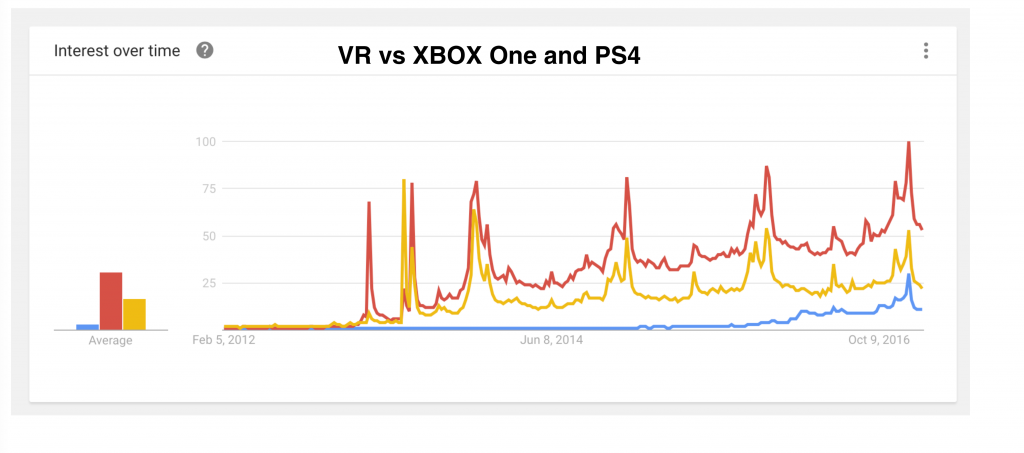
But this represents all virtual reality searches, and unlike XBOX and Playstation, VR has implications in lots of industries. So what does it look like when we compare HTV Vive and Oculus, which are primarily gaming products at this point, to PS4? They barely register. (See the chart below.)
But this represents all virtual reality searches, and unlike XBOX and Playstation, VR has implications in lots of industries. So what does it look like when we compare HTV Vive and Oculus, which are primarily gaming products at this point, to PS4? They barely register. (See the chart below.)
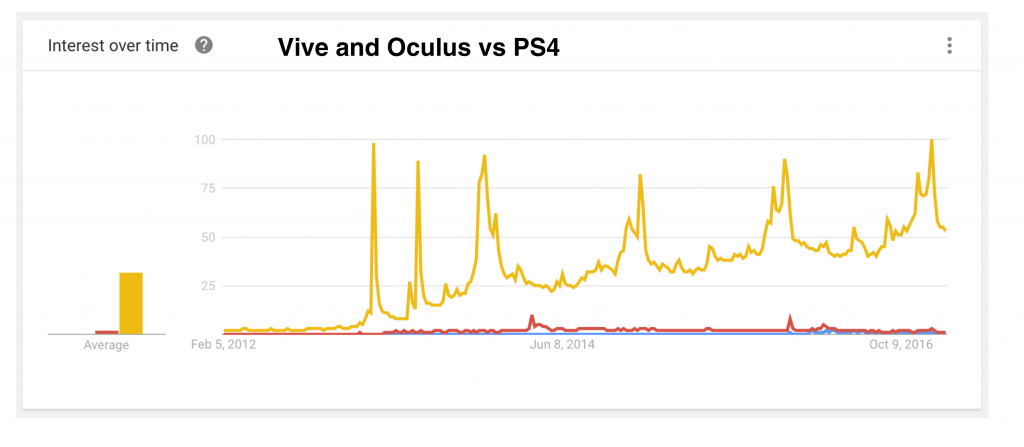
What does this mean? It seems to indicate that VR has a long way to go in garnering sufficient interest from mainstream consumers before it’s a threat to the out-of-home industry the way console games have become. I point this out because many operators are concerned that VR is going to be in every home, and their investments in a commercial VR system will be undermined. We’ve certainly seen how that played out with arcade games, which were gutted by home consoles, and countertops which ultimately were replaced with casual games on smartphones.
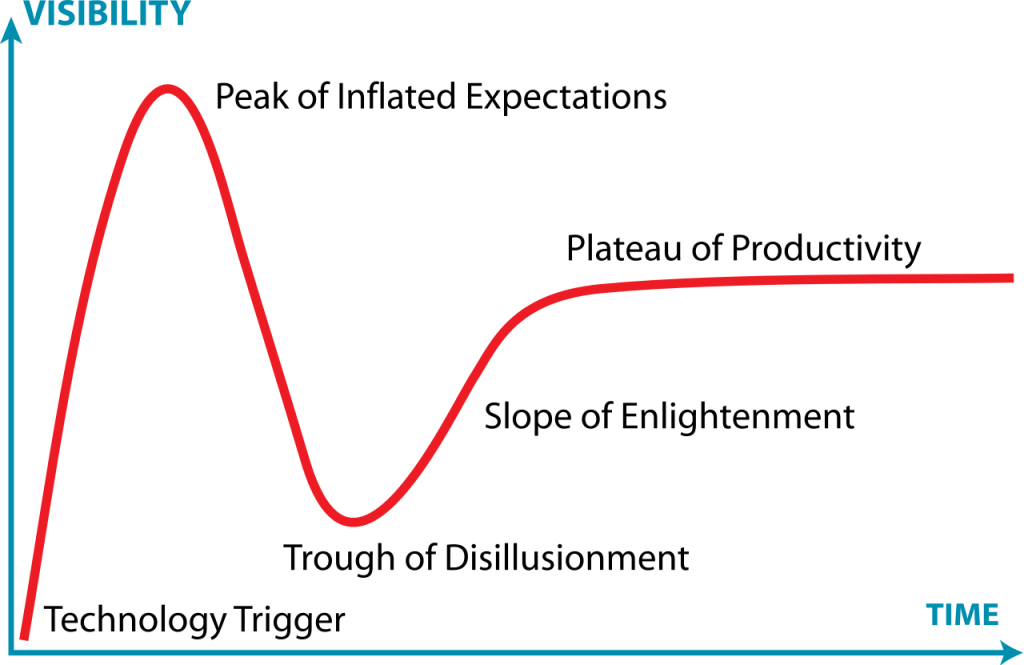
AMARA CYCLE
MacroMyopia
One of the problems caused by overheated media hype is a concept known as MacroMyopia. Based upon the “Amara cycle” first defined by the futurist Roy Charles Amara, it says that we tend to overestimate the effect of a technology in the short run and underestimate the effect in the long run.
One of the most notable examples of this is the iPhone. When Steve Jobs unveiled it 10 years ago, there was a lot of hype. Some people thought it would change the telecommunications industry overnight. But the reality is that it took a couple of years for the Apple App Store to develop, and from that came innovations that nobody could have predicted. Uber is a great example. Without a smartphone, Uber would never have been created. And without Uber, I wonder if self-driving cars would be getting as much investment as they are today. You could make a solid argument that the iPhone, over time, could undermine the entire automobile industry. How’s that for an unexpected impact?
We are currently in the ramp-up to the “Peak of Inflated Expectations” in the Amara Cycle for VR. (See the chart above.) And soon will come the “Trough of Disillusionment.” That’s where the roadkill happens. Dozens, if not hundreds, of businesses will fail. Millions, or billions, of investment dollars will be lost. And consumers will move onto the next shiny new object.
The companies that ride this out bring the technology and products that become the change agents. There’s no way to know if it’s two years or five years away, but I am certain that this graph will play out. So when conducting your purchase consideration, make sure you are looking at companies that have sufficient capital behind them, a product that is capturing the imagination of the public, and a business model that enables you to weather the dreaded trough of disillusionment.
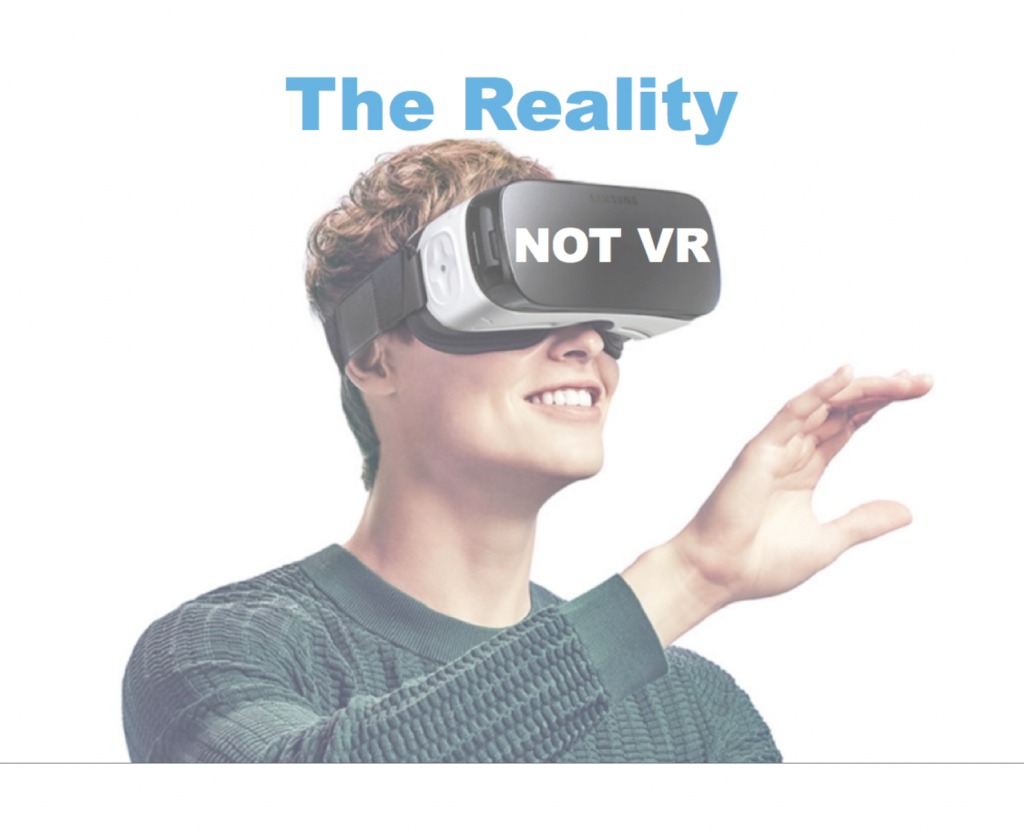 What’s VR…And What’s Not
What’s VR…And What’s Not
To grasp the impact of VR penetration into the home, you need to dig deeper into some segmentation of the VR products. By 2018, only 25% of Americans are expected to own some sort of VR product, but less than 4% are expected to be the high-end systems that could be considered threatening to the out-of-home industry. The rest will be mobile phone-based VR systems like Samsung’s Gear VR. And I’m sorry, but that’s not really VR. It’s a cell phone on your face.
True VR requires motion tracking and movement in space. If the only movement happens when you use some sort of controller, then motion sickness is just over the next hill or around the next corner. I’ve seen ads for Gear VR where people are using it on a commuter train. There are so many things wrong with that I can’t begin to explain, but don’t sit next to that person on your next commute!
The state-of-the-art in consumer VR systems is currently found in HTC Vive, Oculus Rift and Playstation VR, which all offer motion tracking systems that project your movement within a room-scale virtual environment. It feels much more immersive, and with handheld wireless controllers that try to mimic gestures, you can interact with the environment in a more natural way.
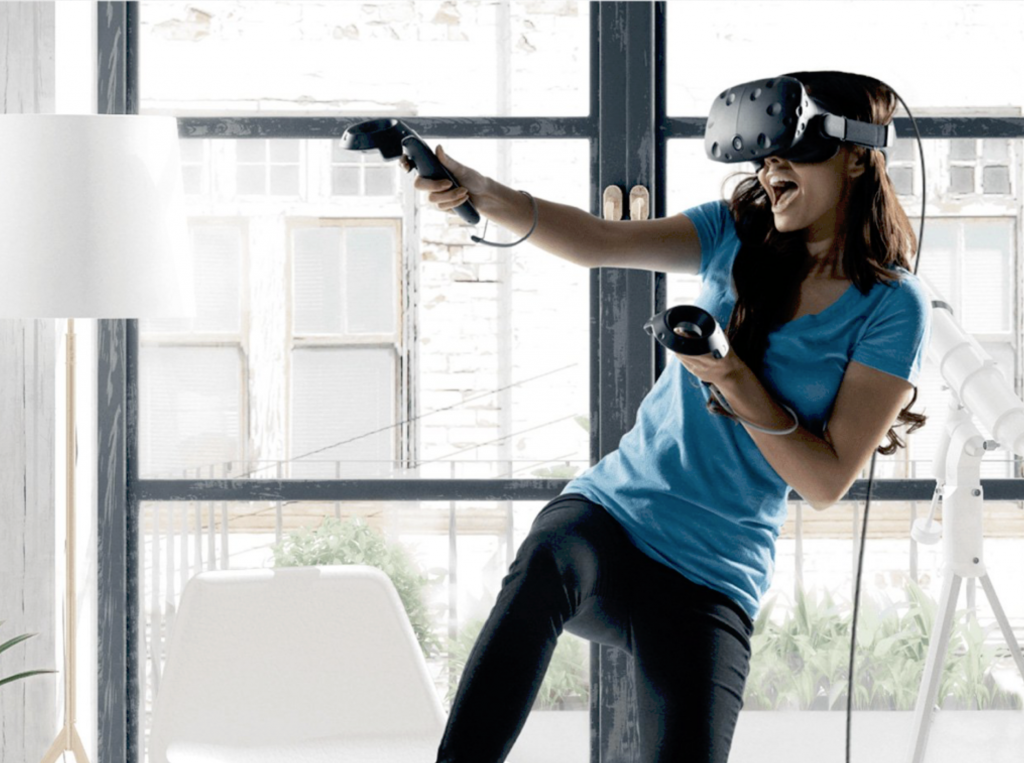 The problem with these systems, and what will ultimately slow or even stall their adoption in the home market, is that they take up lots of room. Take the woman playing with her HTC Vive in this promotional photo (below). If she was really playing in virtual reality, immediately after this photo was taken, she likely knocked over that lamp, tripped over the telescope, crashed through the window, stumbling over the railing and plummeting to her death on the sidewalk below. None of those objects are mapped to the virtual environment in which she is playing. She can’t see them.
The problem with these systems, and what will ultimately slow or even stall their adoption in the home market, is that they take up lots of room. Take the woman playing with her HTC Vive in this promotional photo (below). If she was really playing in virtual reality, immediately after this photo was taken, she likely knocked over that lamp, tripped over the telescope, crashed through the window, stumbling over the railing and plummeting to her death on the sidewalk below. None of those objects are mapped to the virtual environment in which she is playing. She can’t see them.
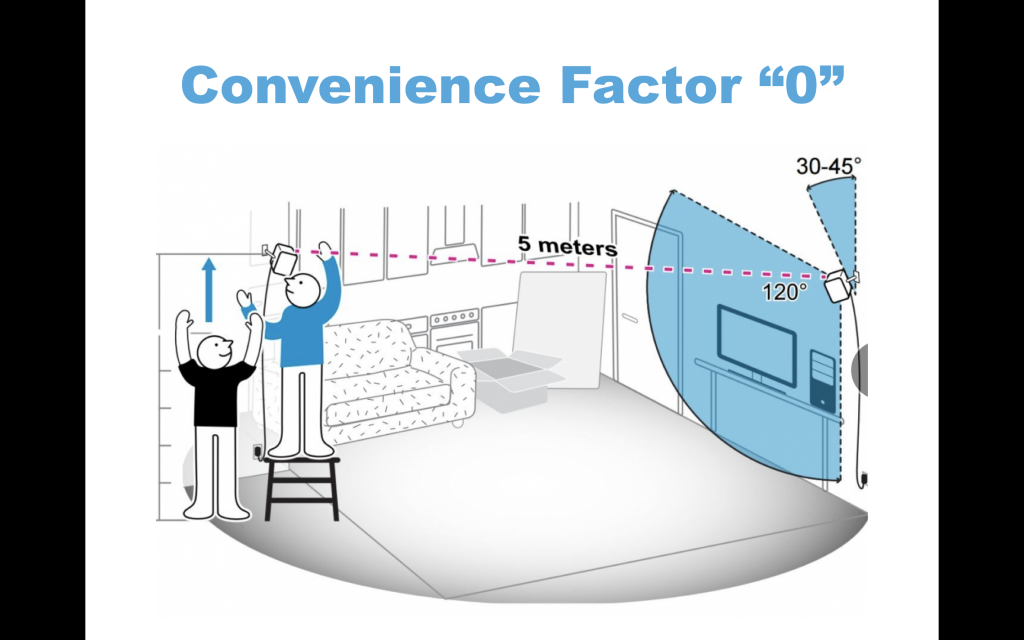
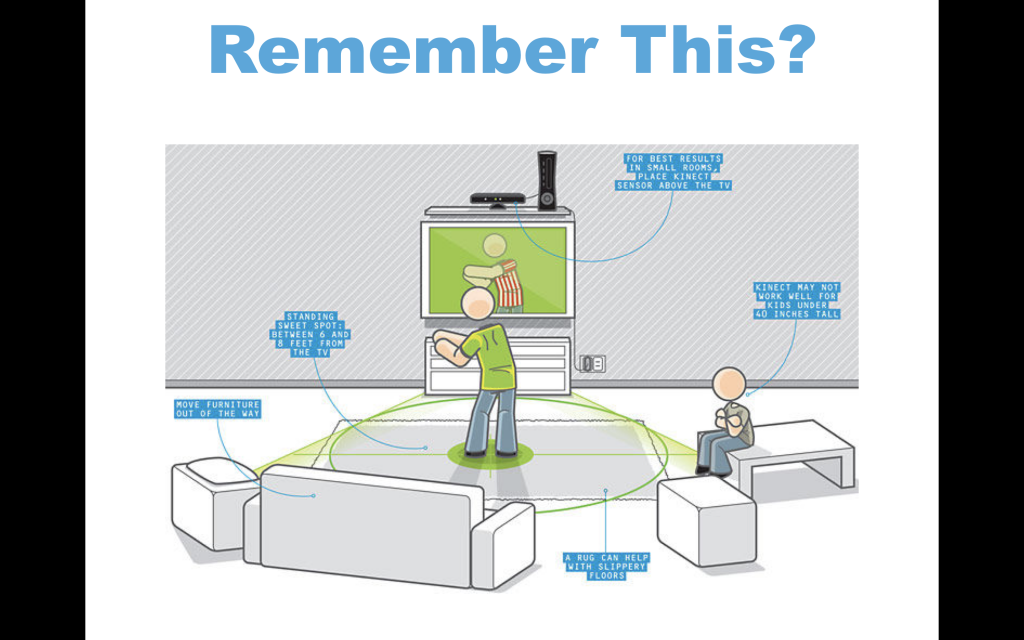 To play room-scale VR, you absolutely need to have a large, clear space free of furniture, toys, dogs and cats, shoes or anything else that you could trip over, bump into, or break. This means that you need to either dedicate an entire room to VR, or you need to move the furniture every time you want to play. (See above left).
To play room-scale VR, you absolutely need to have a large, clear space free of furniture, toys, dogs and cats, shoes or anything else that you could trip over, bump into, or break. This means that you need to either dedicate an entire room to VR, or you need to move the furniture every time you want to play. (See above left).
There was another entertainment technology that required this type of commitment: Xbox Kinect. This was a revolutionary technology that allowed your body to be the controller. Sound familiar? It ultimately failed because it was so inconvenient. (See their graphic of how to rearrange your furniture to safely play.)
And who remembers 3DTV? It was the “Next Big Thing” after HDTV. The CES show in 2010 was dominated by 3D. Movies like Avatar had moved 3D into the mainstream, and BluRay players were shipping with 3D capability. Analysts believed that sports was going to be the “killer app” for 3DTV. NBC had committed to broadcast the 2012 London Olympics in 3D, and ESPN even launched a channel dedicated to 3D with the broadcast of the opening game of the 2010 FIFA World Cup. But it never lived up to the hype, or the investment.
The reason 3D didn’t take off in the home provides another good study of the challenges that VR is likely to face. The technology of that day required viewers to wear 3D glasses, and people didn’t like them. They were awkward and inconvenient, and about 15 percent of the people watching 3D complained of blurred vision, headaches and other slight discomforts. Word of this spread into the public consciousness, and despite all the market tailwinds, this was enough to ground 3D before it could even take flight.
VR suffers from the same issues, only further exacerbated. Comparing the awkwardness of a VR headset to 3D glasses is like comparing the discomfort of chain mail to board shorts. And the motion sickness caused by some VR experiences can literally cause people to throw up. In addition, where 3DTV was a social experience bringing people together in a room to enjoy a movie of sporting event, VR can be extremely isolating. The person wearing the headset cannot see what the other people in the room are doing, and conversely, they can’t see what the person in the virtual environment is experiencing. Therefore it’s highly likely that consumer VR will be limited to the hardcore first-person gaming market. As long as they have enough space in their bedrooms, that is.
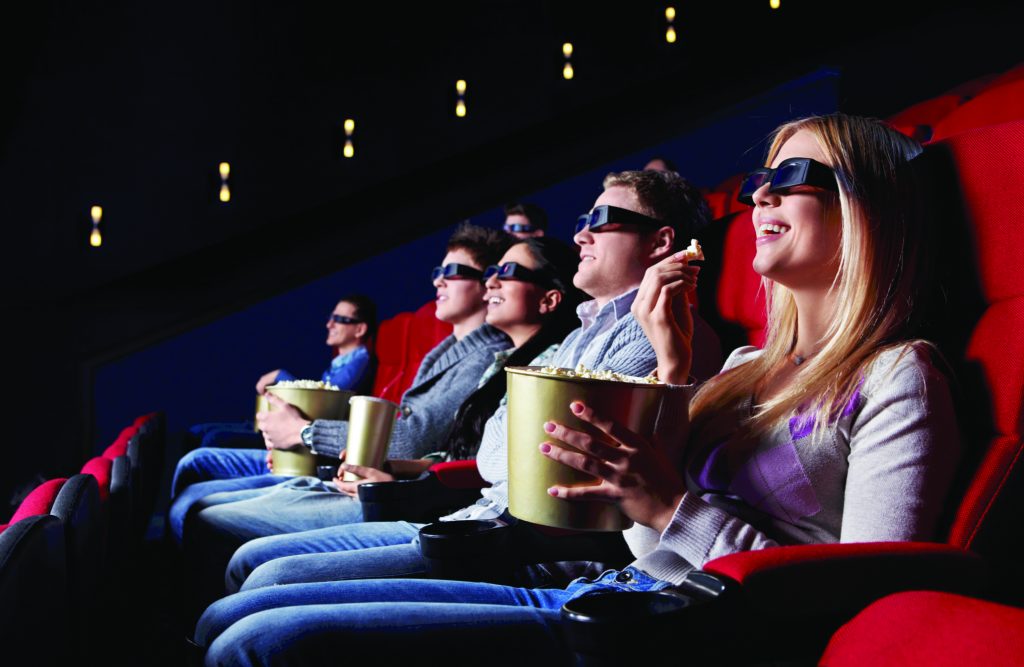
3D movies, unlike its TV counterpart, has been a huge success for theaters. VR stands a good chance of following its model of success in the out-of-home entertainment market.
While 3D never made it in the home, it has had a dramatic impact on out-of-home entertainment. 3D box office continued to grow through 2015, up some 15% over the prior year. And while there were some headwinds in 2016, overall 3D has been an overwhelming success for theaters. Its impact on large-scale amusement rides has been tremendous with experiences such as The Amazing Spider-Man at Universal Studios and Star Tours at Disney World drawing both critical acclaim and hour-long lines.
VR stands a strong chance of following this model of success in the out-of-home market. Currently, we are seeing strong consumer demand for VR on roller coasters. It seems like a no-brainer for an amusement park when they can invest 15% of the original cost of a ride and create an entirely different experience for their guests. Most of the current coasters are utilizing consumer headsets like the Samsung Gear VR, which do present some operational problems. One high-profile installation in England recently changed from using consumer Gear to a custom Head Mounted Display permanently affixed to the cars. I expect you will see more of this over the coming years.
Another area where the activity is hot is in VR arcades and this where I see the most peril for operators. Room-scale VR based upon consumer technology like the HTC Vive can look attractive on the surface, but next month I will explain in great detail why there’s real risk in virtual reality. But relax, I’ll also tell you where the best opportunities lie.
Electronic gaming and location-based entertainment veteran (and avid surfer) Bob Cooney has 25-years of experience designing, manufacturing and marketing out-of-home entertainment to consumers, operators and venues –– first as founder and chief executive of NASDAQ- and Inc. 500-listed Laser Storm, and later as an initial member of the Global VR executive team which introduced the first commercially viable virtual reality arcade game. Cooney went on to become VP of marketing and business development of Ecast, the digital content provider for jukeboxes, and COO of NTN Buzztime, the networked trivia game company. Cooney has been a driving force behind the development of numerous top-earning licensed games, including products based on EA Sports PGA Tour, X-MEN and Stargate, and has been a long-time vocal proponent of leveraging new technology to keep the out-of-home amusement industry relevane. Bob consults with companies on strategy and business development. He can be reached at hirebob@bobcooney.com.




2 Comments
Pingback: Third Wave of VR Looks Like A Tsunami - Bob Cooney
Pingback: Third Wave of VR Looks Like A Tsunami - Part One - Bob Cooney